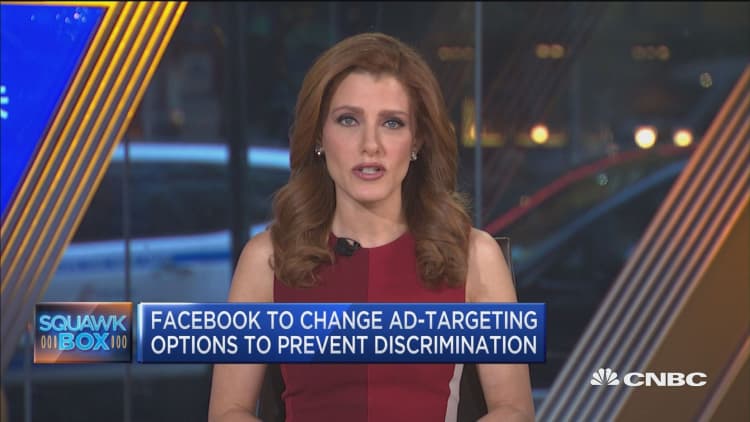Digital ad revenue just keeps on growing.
A new report says internet advertising revenues in the U.S. totaled $107.5 billion for full-year 2018 — the first time that figure has topped $100 billion.
The report, commissioned by the Interactive Advertising Bureau (IAB) and conducted by PwC, said revenue in 2018 was 21.8% higher than full-year 2017 revenue of $88.3 billion. That double-digit growth in internet advertising comes as TV advertising increased 1.4% and radio grew 1% from 2017 to 2018, according to the report. Meanwhile, newspaper advertising decreased 6.9% and magazine advertising fell 2.1% in 2018 year over year.
The momentum in digital comes as advertisers continue to seek the massive audiences and targeting of tech giants like Google and Facebook. But the prospect of regulation may introduce hurdles for that growth. Meanwhile, social media ad growth is slowing, which could be why companies like Facebook are exploring new ways to make money, like shopping ads on Instagram.
The IAB report said 75% of internet advertising revenues in Q4 2018 were concentrated with the top 10 ad-selling companies, but the report doesn't break out those companies. As of February, Google was expected to hold 37.2% of net digital ad revenue share in the U.S. and Facebook was expected to hold 22.1% by the end of 2019, according to eMarketer. The organization said in March that Amazon, Facebook and Google are expected to take in nearly 70% of digital spending in the U.S. by 2021.
The IAB report said mobile and video are leading digital marketing's growth, with mobile reaching $69.9 billion, up 40% from the previous year. Ad revenue from digital video increased from $11.9 billion in 2017 to $16.3 billion in 2018.
Social growth slowdown
Social media advertising revenue grew 30.6% in 2018 to $28.9 billion, but the report notes that expansion has been slowing and is "well below" the 46.6% compound annual growth rate of social from 2012 to 2018.
PwC U.S. partner David Silverman said social's slowing growth may have to do with the "law of large numbers."
"The total number of dollars flowing into social has gotten to be relatively significant at 27% of the overall pie, up from 8% [in 2012]," he said. "A lot of the growth in the industry has been driven by social media."
DTC boon
The report calls out digital ad revenue stemming from e-commerce and the emergence of the direct-to-consumer economy as a key driver of some recent growth. Companies are using consumer data including purchasing and browsing history to let advertisers reach audiences programmatically "in more effective ways," it said. Elements like shoppable ads or more sophisticated search capabilities in e-commerce platforms "are turning clicks into veritable conversions," it said.
"There's growth being driven by the direct-to-consumer market in that the types of companies doing direct-to-consumer lean on the types of advertising available through digital advertising much more heavily than perhaps traditional advertising," Silverman said. He said those companies are looking for return on investment, ability to track their advertising, look at consumer behavior and be able to target certain people where they're making purchase decisions.
How regulation will affect growth
The question of regulation looms over the digital ad ecosystem. Democratic presidential candidate Sen. Elizabeth Warren in March unveiled a plan to break up Amazon and other tech giants, saying they have "too much power over our economy, our society, and our democracy." Warren has said Amazon, for example, plays a dual role of running a marketplace and selling its own products in it, creating a "conflict of interest." Amazon removed some promotional spots for its own products earlier this year.
The report said data-driven advertising in recent years has seen substantial growth aided by the access players have had to consumer data and models that evaluate that data. But regulations like GDPR from the EU and the California Consumer Privacy Act are impacting U.S. companies "and this impact will likely grow," the report said. It said larger players will be in a better position to continue growth and invest in compliance, while smaller players may have more difficulty setting up regulatory guardrails.
"I do think there's going to be some impact as we figure out how we need to conduct business a little differently, and we want consumers to be protected," Sue Hogan, senior vice president of research and measurement at IAB, said. "I think that we just haven't figured it out yet." Hogan said new innovations like 5G could help offset some of the potential effect.
Silverman said regulation will be a challenge and a potential obstacle in the future.
"I think the bigger threat is the stuff that hasn't happened yet," he said. "If companies don't respond appropriately, there could be further regulation. But at the same time, there are opportunities for companies to think of doing new things in a new and innovative way that gets the user's trust."






